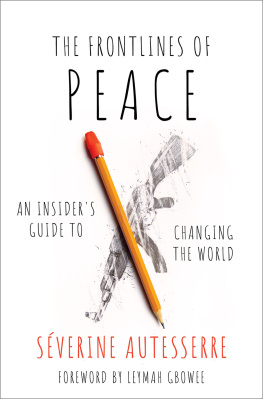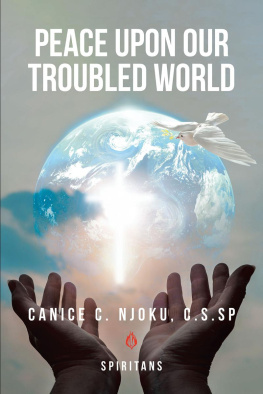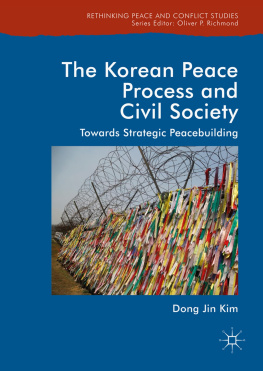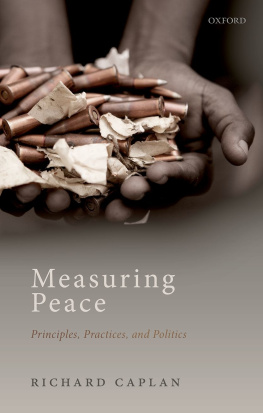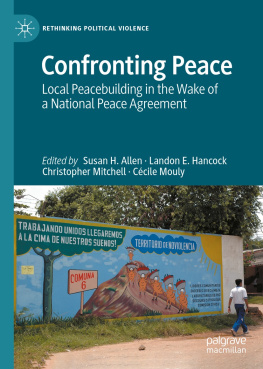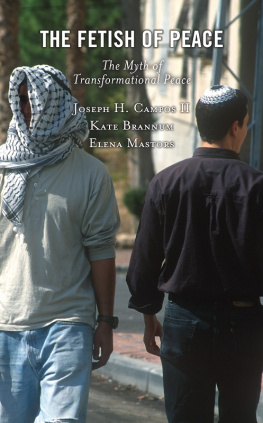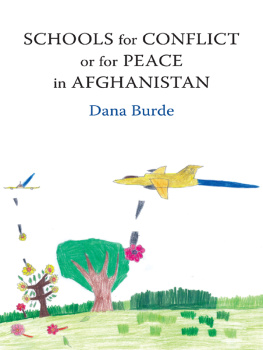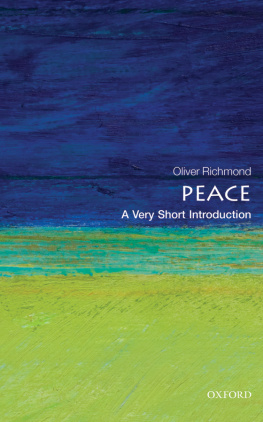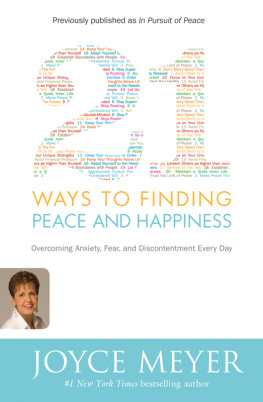The Frontlines of Peace
ALSO BY SVERINE AUTESSERRE
Peaceland:
Conflict Resolution and the Everyday Politics of International Intervention
The Trouble with the Congo:
Local Violence and the Failure of International Peacebuilding
Further Praise for The Frontlines of Peace
Peacebuilding rests on the courage and wisdom of those people closest to conflict, and we must invest in them in ways that dignify their work and commitment. Autesserres book makes clear how to do this. The Frontlines of Peace is a must-read.
John Paul Lederach, Professor Emeritus of International Peacebuilding, University of Notre Dame

Oxford University Press is a department of the University of Oxford. It furthers the Universitys objective of excellence in research, scholarship, and education by publishing worldwide. Oxford is a registered trade mark of Oxford University Press in the UK and certain other countries.
Published in the United States of America by Oxford University Press
198 Madison Avenue, New York, NY 10016, United States of America.
Sverine Autesserre 2021
All rights reserved. No part of this publication may be reproduced, stored in a retrieval system, or transmitted, in any form or by any means, without the prior permission in writing of Oxford University Press, or as expressly permitted by law, by license, or under terms agreed with the appropriate reproduction rights organization. Inquiries concerning reproduction outside the scope of the above should be sent to the Rights Department, Oxford University Press, at the address above.
You must not circulate this work in any other form and you must impose this same condition on any acquirer.
CIP data is on file at the Library of Congress
ISBN 9780197530351
eISBN 9780197530375
DOI: 10.1093/oso/9780197530351.001.0001
To Monique Alligier and Andr Autesserre, who gave me life
And to Philippe, Fanny, Ariane, Ayten, Elisabeth, Leigh, Catherine & Alan, Kim & Jack, and my medical team, who helped me keep it
Contents
byLeymah Gbowee, 2011 Nobel Peace Prize Laureate
AsI read this bookone telling the story of ordinary individuals who successfully opposed violencethe word hope kept coming to mind, as it reminded me of my own journey. More specifically, I am reminded of hopes pertinence in creating a movement powerful enough to end Liberias civil war.
Andmuch like some characters you will encounter in this book, my experience with violence was intimate and intense. As a 17-year-old, I watched bewilderedly as armed menengaged in a power struggledrove bullets through my envisioned future, and the political became personal.
Iwatched for many months as every glimmer of hope of a successful resolution to the ongoing conflict faded. I grew sick of international donors tossing money at the problem, and greedy politicians brawling, when they could have been endeavoring to secure peace.
Aseach day went by, my childrens future looked gloomy. Men who sat at peace conferences returned with no solution to our problems. All the while, women sat idly at home, oblivious to treaty conversations.
Frustratedby the stagnancy of peace efforts, we womenof all ages, means, religions, and tribesunited to champion our cause and that of our children. We resorted to every possible tactic we could imagine: street protests, sit-ins, pickets, prayers, fasting, and vigils. We also employed sex strikes in an effort to get our partners to heed our requests for peace.
Allaforementioned tactics did not garner the needed attention to bring the rebels and government officials to one accord. So, we formed a human barricade to prevent our politicians from exiting the ongoing peace talks. And when that didnt work, we threatened to rip our clothes off. In many African cultures, its considered a terrible curse for men to see their mothers nakedand so they backed off. Eventually, on August 18, 2003, they finally signed the peace agreement that ended our 14-year-long conflict.
Mystory speaks to this simple truth: the people whom foreign interveners are ostensibly trying to savemothers, rural villagers, inner-city dwellers, etc.have the precise know-how and motivation to bring a deadly conflict to an end. This reflects the conclusion Sverine has reached through her 20 years of extraordinary work: her deep dive in todays major conflict hot spots, her access to the hallways and dining rooms of world leaders, and her willingness to speak truth to power.
Thoughthis truth is simple, its enormous implications require overhauling the entrenched peacebuilding procedures that the United Nations, diplomats, and politicians have used for decades. And this is no easy feat, as you will learn through the many tales of outcast peacebuilders and aid interveners who dared to do things differently.
Iveseen Sverine speak to students, activists, and Nobel laureates. While we may come from different worlds, we are warriors who place our trust in the same weapons and have the same core beliefs at heart. Her research findings resonate with my personal journey. The principles on which she stands are those at the center of the Gbowee Peace Foundation Africa and the Women, Peace, and Security program at Columbia University. When we speak, and when we write, both of us want to take our audience on a transformative journey, which is precisely what The Frontlines of Peace will do for you.
Inthis book, you will read the untold stories of individuals who effectively fight for peace every day across the globe. Youll see how the residents of Idjwi have avoided falling prey to the terrible violence that has engulfed their neighbors in the rest of eastern Congo. Youll become familiar with other communities that have established peace amid devastating armed conflicts, like in Somaliland and Colombia. Youll discover a new approach to peace that can work for conflicts around the world, including where you live. And youll understand how an ordinary individual like me could build lasting peace, and win the Nobel Peace Prize!
Byreading this book, youll grasp what you can personally do to build peace around you, whether or not you live and work in conflict zones. Because a victim of rape in Liberia feels the same pain as one in Europe. The tears of parents losing sons and daughters to gun violence fall just as hard in the inner cities of America as they do in Syria. The trauma of young children forced to fight in Burundi reflects that of all youth forced to grow up under systems of violence across the globe. Violence affects us all, and the alternative peacebuilding strategies outlined in The Frontlines of Peace can be applied to any of its forms.
Forthe longest time, the kind of bottom-up, insider-led approach to resolving conflict that Sverine advocates for was disdained and overlooked in international circles. To an extent, it still is today. Local peacebuilding strategies are indeed starting to receive significant attention from individual practitioners and researchersin part thanks to Sverines trailblazing scholarship on this matter, as well as the work of the individuals and organizations she portrays in this book. But today, too many powerful actors around the globe still consider grassroots peacebuilding a sideshowthat it is a profoundly controversial enterprise. Most of the fabulous local initiatives I see around me remain unreported, undocumented, and unsupported. At the same time, our leaders and the media focus all their attention on warlords, corrupt politicians, and international elites. Plus, the idea of putting locals in the drivers seat continues to alarm and anger many foreign aid experts.

